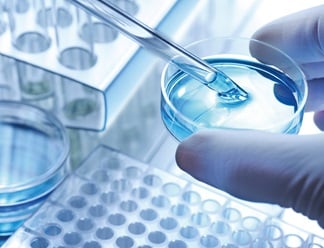HARTMANN SCIENCE CENTER

Sepsis is a life-threatening disease that disturbs the immune system by attacking the whole body and damaging multiple organs. Sepsis is often referred to as blood poisoning in the colloquial language. This term is not accurate to describe the clinical picture of this disease, because sepsis also attacks human tissues and organs. Also, sepsis is not caused due to a pathogen that ''poisons" blood. The cause of sepsis rather lies in the inadequate reaction of the immune system to the infection.
Sepsis needs to be separated from SIRS (systemic inflammatory response syndrome). The clinical picture of SIRS is similar to that of sepsis, but there is no evidence of infection.
Sepsis is an absolute emergency. The faster a person falls sick with sepsis, the lower are the overall chances of survival and recovery.
Sepsis is normally caused by a bacterial infection. However, there are some cases in which parasites, viruses, or fungus has been responsible for the outbreak of sepsis.
The most common pathogens are E. coli, Streptococci, Staphylococci, Pseudomonades, Bacilli, Enterococci, Enterobacter spp., Candida spp. and Klebsiella. It is assumed that there are as many infections during outpatient care as there is with nosocomial pathogens. Serious respiratory tract infections, post-operative wound infections, primary sepsis without any traceable vessel catheter (including infections which are associated with vessel catheters) and symptomatic urinary tract infections are among the nosocomial infections which are typically connected to sepsis1.
It is very difficult to estimate the overall count of people who fall ill with sepsis every year. The World Health Organization (WHO) estimates that every year, more than 30 million people get sepsis and 6 million people die from the infection worldwide. The Global Sepsis Alliance even estimates a total number of 47 to 50 million people who are affected by the disease and at least 11 million deaths per year. In Germany, 280,000 people fall ill with sepsis and at least 70,000 people die from it2. Sepsis is the third most common cause of death and is placed before cardio-vascular diseases. Generally, every person who has an infection can die from sepsis. However, the risk is different for certain populations. Older people, pregnant women, newborn babies, people with pre-existing medical conditions, people without a spleen and those hospitalised have an increased risk of falling ill with sepsis.
Fever or hypothermia, and increased breathing and heart rate as well as Leukocytosis and Leukopenia (SIRS-Criteria). Additionally, change of consciousness, hypotension, exhaustion, coughing, stomach ache, reddened wounds, and kidney pain is also among the symptoms. Most of the symptoms are not specific to sepsis and can also be caused by other diseases. The guiding criteria for sepsis were summoned in a revised definition from 2017: Organ Dysfunction, Cardiovascular Collapse that does not react to a fluid supply, Lactate Values over 2 mmol/L 33. The presence of two SIRS criteria, which has been used in the previous definition of sepsis, has lost its value.
Time is one of the most important components in the treatment of Sepsis. An emergency call should be called immediately. People who fall ill with sepsis need intensive care and will receive intravenous, antimicrobial therapy. A broadband therapy will normally start which can cover the bacteria or parasites that have cause sepsis. The antimicrobial treatment will only be limited when the results of the pathogen diagnostics are available4.
Once a person with sepsis has recovered, sufficient time should be allowed for convalescence, and the need for rehabilitation should be assessed.
The easiest way to prevent sepsis is the avoidance of any infections. This includes the implementation of effective hygienic measures, programs for the prevention of infections, hygienic cooking of food, improvement of water quality, access to vaccines and a healthy eating habits.
Sources:
1 Brunkhorst FM, et al. Aktuelle Aspekte zur Definition und Diagnostik der Sepsis und Antibiotikaresistenz. Bundesgesundheitsbl 2018; 61: 562–571. https://edoc.rki.de/bitstream/handle/176904/6191/Aktuelle%20Aspekte%20zur%20Definition%20und%20Diagnostik%20der%20Sepsis%20und%20Antibiotikaresistenz.pdf?sequence=1&isAllowed=y
2 Fleischmann C, et al. Hospital incidence and mortality rates of sepsis—an analysis of hospital episode (DRG) statistics in Germany from 2007 to 2013. Dtsch Arztebl Int 2016; 113: 159–166. https://www.aerzteblatt.de/pdf.asp?id=175274
3 Weis S, et al. Sepsis 2017: Eine neue Definition führt zu neuen Konzepten. Dtsch Arztebl 2017; 114: A1424–A1428. https://www.aerzteblatt.de/pdf.asp?id=192597
4 Rhodes A, et al. Surviving sepsis campaign: international guidelines for management of sepsis and septic shock. Intensive care medicine 2016; 43: 304–377. https://journals.lww.com/ccmjournal/Fulltext/2017/03000/Surviving_Sepsis_Campaign International.15.aspx